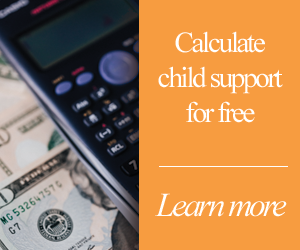The Brady Bunch was a popular tv show that ran from 1969-1974 on ABC. This show from over 50+ years ago went on to become a cultural icon for children and teenage viewers and even the reruns have been a popular choice for television viewing ever since the mid 1970’s. The show also had several follow-up spinoffs and movies. The actors were popular guests on other tv shows. Despite the age of the show, there are family life lessons that can still be helpful today.
The show focuses on middle class life in the Los Angeles suburbs for a widower named Mike Brady and his 3 sons as he re-marries Carol Martin, a mother of 3 herself, and they all move in together. Each family of 4 immediately blends into a family of 8 (but really a family of 9 since Alice, the live in housekeeper, is an essential family member as well).
No mention is ever made of divorce, but the show does follow how the children must adjust to their new family members. Even though the kids are legally each others step siblings, early on their new mom explains that “there are no steps in the household”, just those on the famous staircase in their groovy, mid-century split level. Every child calls their mom “Mom”, and their dad “Dad”. There are episodes about sibling rivalry, jealousy, first kisses, crushes, school issues, blending pets into a family, fights over 6 kids using the same bathroom, etc. But, for the most part, any struggle was solved in 30 minutes (more like 25 minutes with commercials), and everyone lived and loved happily ever after – or least until the next episode.
Blended Families in the United States
It seemed immediate that the children in The Brady Bunch take on their new (step) father’s surname, which is rarely the case in today’s world of blended families. There are legal proceedings required for that that, and they don’t happen as quickly as many would like. Not to mention, it’s not incredibly common for parents today to change their child’s last name, regardless of remarriage. Let’s see what else reality looks like for blended families that aren’t seen on TV.
Currently in the US, about 16% of children live in a blended family, which may include a stepparent and stepsiblings There are 1300 new blended families created daily in the US. Parents may be marrying for the second time because of divorce or death. Or, perhaps, the marriage may be the first but there are children being brought into a blended situation.
Regardless of how the family is created, there can be many adjustments that need to be made to ensure happiness for all family members.
One challenge will be coordinating all schedules for the children. There is the school calendar for each child, but also there are extracurriculars, social events, etc. that need to be coordinated. Many parents find that if there is visitation with another parent, it may work best to have all children spending their time with their other parent simultaneously. Not only does this perhaps give the parents some down time, but it sends the message to the children that no sibling is being left behind to play “favorite” with the parents. Having a great calendar system is essential; it is helpful for parents and the children. And, if your blended family is lucky enough to have an “Alice”, she needs it as well.
It is also recommended that each parent spend quality alone time with each child; send the message of love and acceptance to each child. Every child is different, some may need more time to adjust than others. Parents also need to be mindful that as the child ages, their issues to find their identity are common for all children as they enter adolescence and teenage years.
Accommodating Children’s Needs and Parenting Styles
Parents may need to be mindful that their parenting style is different from their new spouse’s, and each family may have different routines and traditions. Perhaps Friday night was always pizza and movie night for mom’s family, but dad’s family routinely had pizza and movies on Sunday night. Mom’s family and extended family traditionally spend 2 weeks at the beach every summer for the first 2 weeks of July. Dad’s family may take a mountain and hiking adventure during this time.
Parents also need to be aware that children might need time to adjust to the new “position” dynamic in their family. For example, dad’s oldest child may have once been the “boss” of the younger kids, but find that now, in their new family, that child may have older step siblings who are the new “bosses”. Think of the Brady’s: Greg is the oldest and the leader, even though Marcia used to be the oldest in her family. Cindy and her pigtails replaced Bobby as the baby.
Not only do the children struggle in a new blended family, but there are adjustments for the parents. There are more children in the house, perhaps less privacy and additional time demands. Family experts do recommend that the new couple take time for themselves and their marriage. It is often noted, that the new marriage needs to be strong to help support the love and guidance that needs to be given to the children.
The divorce rate for first-time marriages is 40%. It rises to 60% for second-time marriages and to 70% for second marriages with children. Spouses need to address issues between each other, and then secondly, deal with issues with the children.
All of this takes time and a true dedication to the new family dynamic. Everyone adjusts over time-most of the time.
Timing is Everything
One note we like to share with our divorce clients: if you are still in the separation phase and you are not divorced from your spouse, be mindful of when you introduce your children to a new partner. There is no law on this, but we encourage clients to have at least 6 months of dating history with a person before you subject your children to spending time with a new partner. This type of situation calls for a case by case review, but parents need to realize that the children will likely need time to adjust.
This can sometimes have implications on custody. A parent who introduces their new partner to their children too early as a way to spend more time with their new significant other even during custody time is viewed quite differently from a parent doing so to ease their children into the idea of how their new family might look. Still, regardless of your reasoning, keep your children’s stability in mind above all else. Even well-intentioned parents can miss how hurt their kids are when meeting a new partner. They can often be seen as a “replacement” mommy or daddy, creating fears in children about what might happen to their other parent when they’re away from them. At the very least, they are likely not as excited about the idea of their parent dating someone new as their parent is. Give them time, let them know there is someone new in your life before a surprise introduction, and always vet new partners before even thinking about introducing them to your children.
Hopefully, with this knowledge, your new blended family will be happy like the Brady kids. If you need help with resources for your family, call our office to learn about what free resources we provide to blended families. We have tools like support calculators and tools for scheduling custody drop offs all the way to children’s books like Jake’s Fridays, a children’s book about blended families written by our attorney Misty Hardison.















